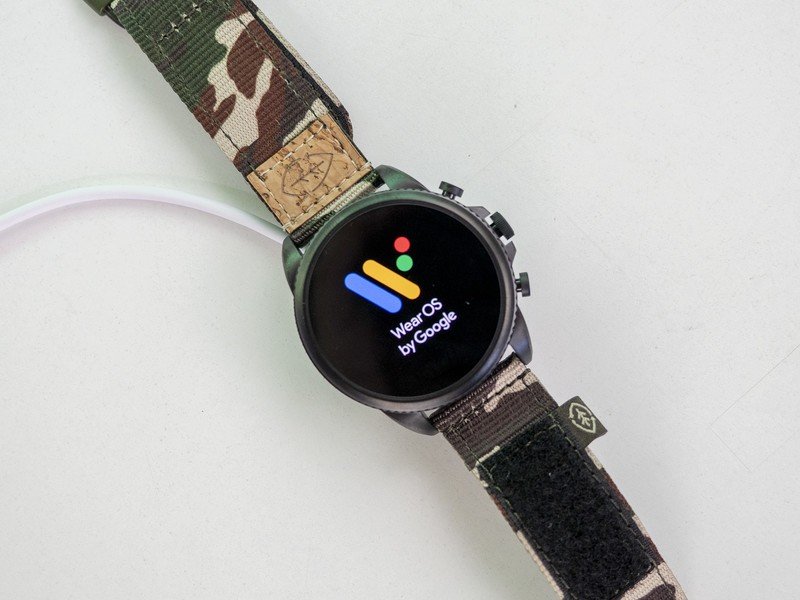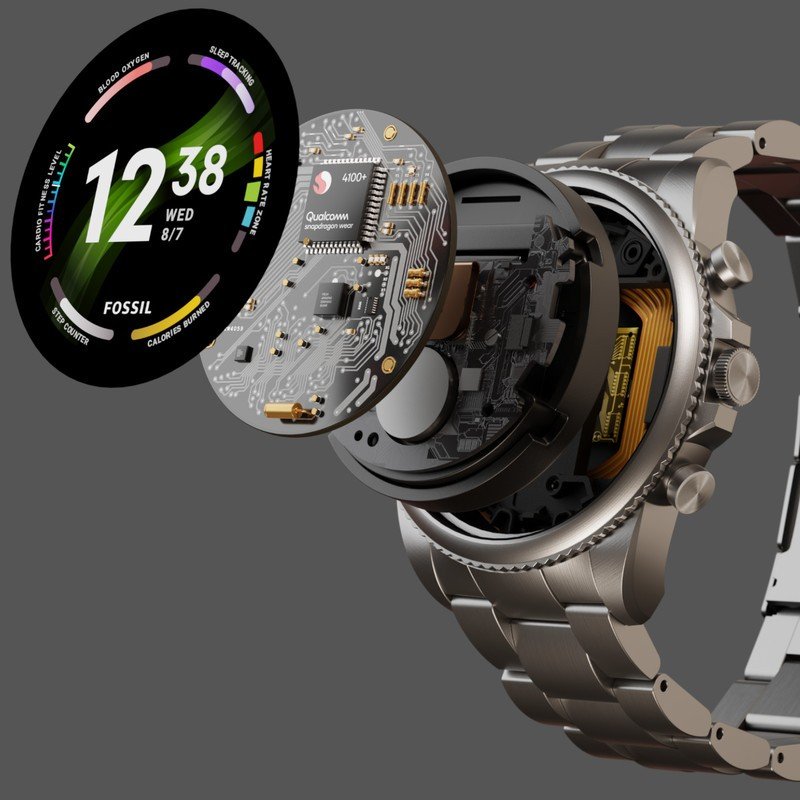Here's what Fossil needs to do to compete with the Galaxy Watch in 2022

Wear OS may not be perfect, but its latest iteration shows that Google is serious about giving its wearable platform a fighting chance. Thanks to the Galaxy Watch 4, Wear OS is finally a usable, functional platform with fairly impressive hardware to match. But Samsung isn't the only one making Wear OS smartwatches, and we can't forget that Fossil has continuously produced some of the best Wear OS watches over the years.
While Fossil's latest offering brings some notable advancements with a new chipset and refined design, there's still much room for improvement. These are some ways that Fossil can make its smartwatches stand out among the crowd in 2022.
Wear OS 3 can't come soon enough
If you look at any of the reviews of the Fossil Gen 6, many of them come up with the same conclusion: the Gen 6 is a decent smartwatch, but one of the main glaring downfalls is the fact that it's still running the aging Wear OS 2. The version still suffers from lags when navigating the UI, using Google Assistant, or performing basic tasks, and the onboarding process is a mess.
Even with the "way faster" Snapdragon Wear 4100+ chipset, that doesn't seem to be able to save it from the pitfalls of Wear OS 2. This applies not only to the performance but also efficiency, with the Gen 6 only able to clock in a day's worth of use. That's not really an improvement over the Fossil Gen 5, and while the Galaxy Watch 4 isn't exactly a two-day powerhouse, it can still last longer on a single charge.
That's not entirely the fault of Wear OS 2 but seems to highlight a problem with Fossil. For instance, the Mobvoi TicWatch Pro 3 Ultra can last on a few days before needing a top-up, and it too runs Wear OS 2. That's thanks to its much larger battery and unique dual-display technology.
Still, Wear OS 3 is expected to improve performance and battery life, which the Gen 6 could definitely take advantage of. Not to mention it'll bring Fitbit integration, improved app experiences, and more. That said, we have to wait until around the second half of the year before the Gen 6 or any other Wear OS smartwatch is set to receive the update. Unfortunately, consumers aren't likely to wait around when the Galaxy Watch 4 is already available, and it's largely outside of Fossil's hands while Google takes its sweet time preparing the update for non-Samsung smartwatches.
Fossil is missing its "killer app"
And the Galaxy Watch 4 is a big part of Fossil's problem because it got nearly a year's head-start with Wear OS 3. While it may not be for everyone, it's quite an impressive smartwatch, bringing the best of Google and Samsung to propel Wear OS to new heights. That includes Samsung's UI, excellent software support, impressive feature set, and more.
Get the latest news from Android Central, your trusted companion in the world of Android
Fossil used to be the best of Wear OS but is now becoming second-tier behind Samsung.
At one point, Fossil smartwatches were the pinnacle of Wear OS, to the point that Google went and spent $40 million to buy part of Fossil's R&D team. Where Google would fall behind on software support, Fossil would fill in some of the holes with its own additions such as iOS support, fitness tracking through the Wellness app, and a host of other improvements that it brought to the Gen 5. But with Gen 6, Fossil has only made incremental improvements, and it largely fails to stand out.
Fossil needs to give users a reason to buy its smartwatches over the Galaxy Watch. Sure the Gen 6 has faster charging and iOS support, but beyond that, it brings nothing new or exciting to the table. That's quite unfortunate, too, with rumors of a Pixel Watch growing. While we don't exactly know what the Pixel Watch will bring to the table, it could potentially push Fossil further behind the pack.
More carrier support
One thing that Samsung has over other Wear OS OEMs is its fantastic carrier support. You can find the Galaxy Watch 4 at any of the major carriers, making it easily accessible to anyone walking in and looking to upgrade their phones. That makes it easy for carriers to bundle the watch with new smartphone purchases and offer discounts. However, beyond the Galaxy Watch 4, you'll be hard-pressed to find another Wear OS smartwatch in a carrier store.

Mobvoi has an LTE model of the TicWatch Pro 3, but you won't find it in the U.S., while the TicWatch Pro 4G isn't even worth a look. Last year, Fossil finally made the jump to cellular connectivity with the Gen 5 LTE, but it was limited to Verizon. Not only that, but it was powered by the aging Snapdragon Wear 3100 chipset, so it was more or less dead on arrival. However, with the newer Gen 6, Fossil curiously left cellular connectivity out of the equation.
Wear OS has had a visibility problem for some time now, and the lack of carrier presence is part of the problem. Having more Wear OS smartwatches in stores would help improve the functionality of the watches so that they're not wholly tethered to smartwatches for functions like calling and texting. Not to mention, offering smartwatches through carriers makes them more accessible by softening the financial burden of purchasing one, allowing users to break up payments into monthly installments.
Ditch Qualcomm
The Snapdragon Wear 4100+ chipset isn't terrible by any means, but the platform is already more than a year old and wasn't exactly designed with Wear OS 3 in mind. Granted, Qualcomm has assured us that it should be able to handle the update just fine, but part of the reason why Google's Wear OS platform hasn't been well received is that the chips powering the watches weren't great.
The Wear 4100 changes that some, as it's built on a much smaller 12nm process for better efficiency than the Wear 3100. For all intents and purposes, it makes Wear OS 2 usable, but in 2022 that's not enough. Meanwhile, Samsung's Exynos W920 powering the Galaxy Watch 4 is built using more powerful cores, a faster GPU, and is more battery-efficient thanks to its 5nm node, making it a powerhouse for smartwatches. The chip could also allow more robust RAM and storage options for Fossil.
Qualcomm has announced that its committed to the future of Wear OS and is rumored to be working on a new wearable chip. However, early indicators point to incremental improvements using the same CPU setup but with higher RAM and storage options. As far as performance and efficiency go, it might still fall behind the Exynos.
Google is rumored to tap Samsung to power its Pixel Watch. It might be wishful thinking, but Fossil might want to consider doing the same with its next-generation smartwatches, at least until Qualcomm can get its act together.

Derrek is the managing editor of Android Central, helping to guide the site's editorial content and direction to reach and resonate with readers, old and new, who are just as passionate about tech as we are. He's been obsessed with mobile technology since he was 12, when he discovered the Nokia N90, and his love of flip phones and new form factors continues to this day. As a fitness enthusiast, he has always been curious about the intersection of tech and fitness. When he's not working, he's probably working out.


